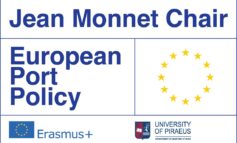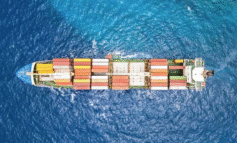Almost from its inception, there has been a clear upward trend in the disruptive force of the container during its use. However, a relative decrease in container movement has been seen in recent years, the explanation of which goes beyond disturbances in the world economy. PortEconomics member Ricardo J. Sánchez along with Eliana Barleta, note that the inter-annual change in throughput with respect to changes in GDP is declining. To understand this phenomenon, Ricardo and Eliana have examined variations in containerization, notably factors that cause containerization to increase and decrease. With the intent to explain these upward and downward variations, some working hypotheses proposed and demonstrated, particularly the shrinking of cargo, possible decreases in transhipments, changes in consumption and the increasing use of 40’ containers rather than 20’ containers.
Introduction
It is well known that the container is a vector of production and distribution[1], and that transport has changed and evolved completely over time, supporting the creation of the modern logistics industry. This document aims to put forward hypotheses about the future of this vector, following a recent noticeable decrease in the pace of advancement of containerization.
The use and evolution of the container in intermodal logistics is noteworthy. Until the present day, it has played an influential part in the interaction between the economy, production and distribution. Containerization has participated significantly not only in trade, but also in global industrial structure, contributing to the growth of bilateral trade between countries[2].
Containers were first uploaded onto boats in 1956, after being created by the American Malcolm P. McClean, who was looking for a faster and more efficient way to transport goods. Although the container originated in the terrestrial mode of transport, its great potential was evident when it was used as a multimodal tool, especially between the maritime, railway and terrestrial modes[3]. Its evolution followed, and currently, containers are the main agents of the internal and international logistics system[4].
The benefits of the use of the container in international trade are diverse. Some of the most notable elements are[5]:
- Standardization of the transport of products
- Flexibility of use
- Computerized tracking management
- Reduced transportation costs
- Storage
- Security (containers can only be opened at source, destination or customs)
Containers also converted the handling of bulk loads, into mechanized systems of loads of various types and dimensions. They were also placed in boxes that followed measurement standards which facilitated international trade[6] and notably diminished labour requirements in the management of the cargo.
This discussion will begin with a brief historical review of the phenomenon of containerization followed by a hypothesis to develop understanding of its present use, in the face of the future.
Follow the link to download and read Ricardo’s and Eliana’s full article.
- [1] Rodrigue, J-P. & Notteboom, T. (2008).
- [2] Rodrigue, J-P., (2013).
- [3] Rodrigue, J-P., Comtoisd C, Slack B. p. 24 (2006).
- [4] Idem
- [5] Summary drawn from “The geography of transport systems” de Rodrigue, J-P., Comtoisd C, Slack B. p. 116 and 117 (2006).
- [6] Rodrigue, J-P., Comtoisd C, Slack B. p. 116 (2006).












